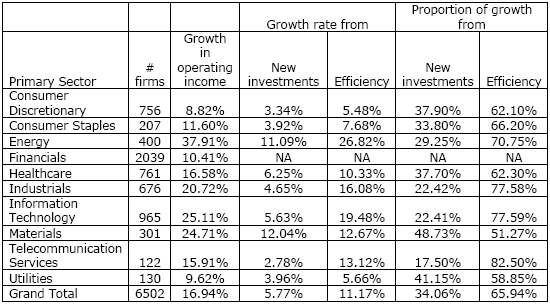How should investors view corporate earnings estimates as determinants of stock valuations? Are analyst and management forecasts of any value? Is high growth inherently unsustainable? Is the source of growth important? In his June 2008 paper entitled “Growth and Value: Past Growth, Predicted Growth and Fundamental Growth”, Aswath Damodaran examines the patterns and broad lessons of research on growth forecasts. Using results from past studies and new analyses of earnings data for 1997-2007, he concludes that:
- In general, historical growth rates do not persist. Firms with high past growth rates are just as likely to experience low growth as high growth in the future.
- While expert (analyst and management) forecasts contain some information, they have substantial errors and low predictive power.
- Analyst forecasts are generally more accurate than simple extrapolations of past earnings, but this advantage deteriorates as forecast horizon increases.
- Management uses guidance more to manage short-term earnings with respect to analyst expectations rather than to inform long-term growth forecasts.
- Earnings growth derives from: (1) marginal returns on new investments; and/or, (2) improved efficiency.
- The value of growth depends upon the associated excess return (return on equity minus cost of equity). For firms with excess returns greater than 10% (negative excess returns), each 1% increase in growth rate translates into an average increase of 1.31 (0.35) in price-earnings ratio. Also, the portion of the price-earnings ratio explained by forecasted growth declines with the excess return.
- Mature firms with poor returns on equity have elevated potential for efficiency growth, but such growth is generally unsustainable.
- High growth rates tend to moderate over long periods as growing firms increase in size and attract competition.
The following table, taken from the paper, decomposes 2007 sector operating earnings growth rates into growth from new investments and efficiency growth. Nearly two thirds of overall earnings growth is efficiency growth (as has been the case for much of the last decade). As efficiency growth fades, earnings growth rates will revert to the sustainable growth rate.

In summary, assessing the valuation implications of earnings growth requires delving into the sources of that growth (investments in new products/capabilities versus improvements in efficiency).